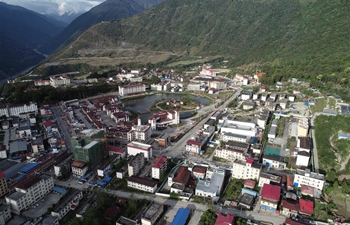BEIJING, April 20 (Xinhua) -- The following are the highlights of China's science news from the past week:
ANTARCTIC SEA ICE
-- A team led by Chinese researchers has revealed the fine-scale surface features of the Antarctic sea ice by using drones to acquire high-resolution images and data.
Using the unmanned aerial vehicle "Polar Hawk-III," Chinese researchers obtained remote sensing data of sea ice in the east Antarctic in China's 33rd Antarctic expedition in 2016 and 2017.
This is the first time that Chinese researchers used drone technology in surveying and mapping large areas of Antarctic sea ice.
CHANG'E-6 MISSION
-- China announced the cooperation plan for its future Chang'e-6 mission, offering to carry a total of 20 kg of solicited payloads, according to the China National Space Administration on Thursday.
The orbiter and lander of the Chang'e-6 mission will each reserve 10 kg for payloads, which will be selected from both domestic colleges, universities, private enterprises and foreign scientific research institutions.
ASTEROID EXPLORATION
-- China on Thursday unveiled its plan to explore an asteroid and a comet, inviting scientists around the world to participate in the program.
The mission will involve exploring a near-Earth asteroid, named 2016HO3, and a main-belt comet, named 133P, according to the Lunar Exploration and Space Program Center of the China National Space Administration.
HUMIDITY-RESPONSIVE SMART TEXTILE
-- A new study published in the international journal Advanced Functional Materials said that scientists using silkworm silk have developed a smart textile that can automatically contract and stretch with humidity changes.
According to the study, the sleeves made from such smart textile can shrink as much as 45 percent in the vertical direction when exposed to moisture or sweat and then recover to its initial length when the environment becomes dry.
DESALINATION WITH RICE STRAW
-- Chinese scientists have developed an innovative desalination technology that uses rice straw and sunlight for clean water production.
Solar steam generation is considered to be a promising strategy for purification of wastewater and seawater. Scientists from the Ningbo Institute of Materials Technology and Engineering, Chinese Academy of Sciences have developed a solar steam-generation device from wasted rice straw.

















